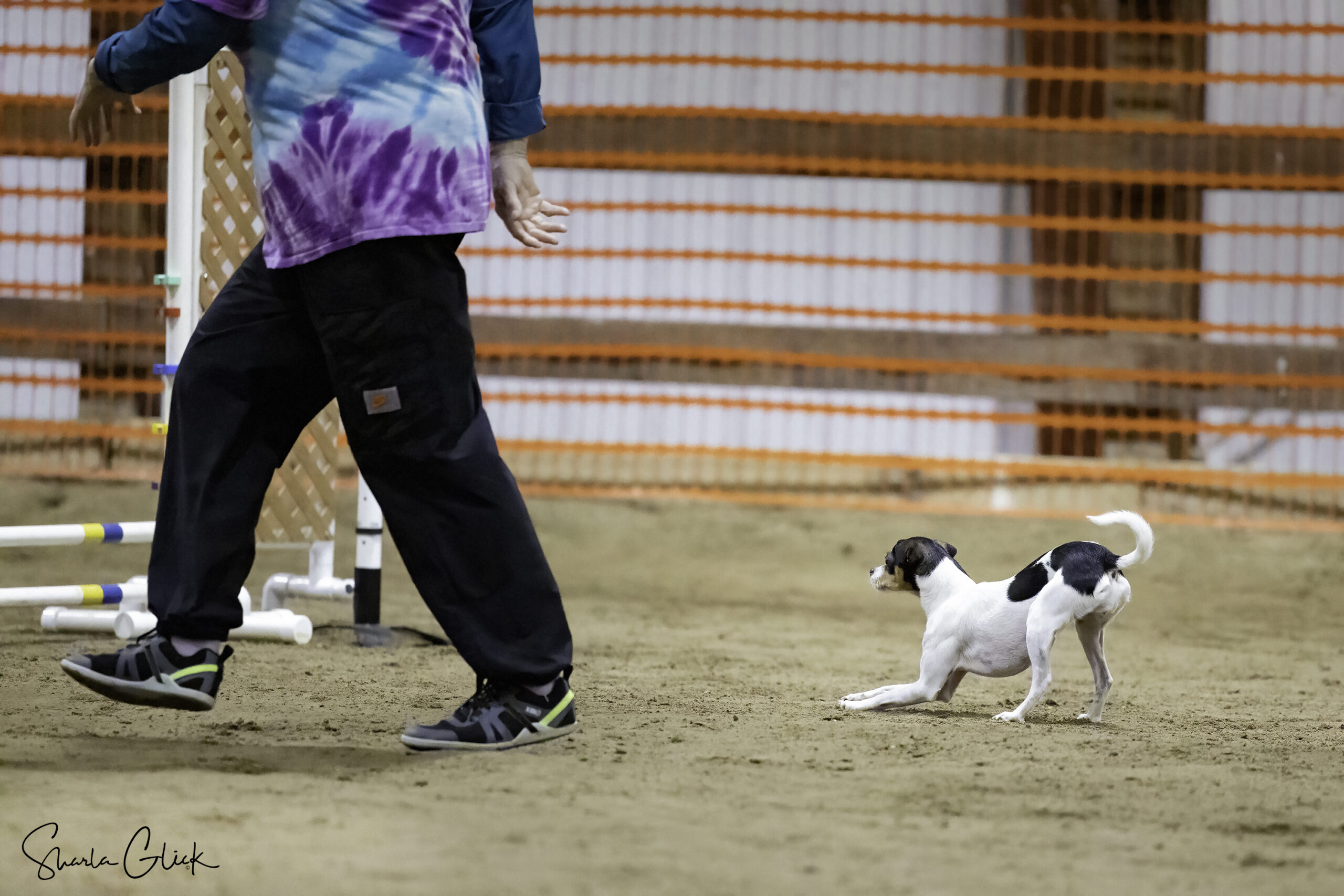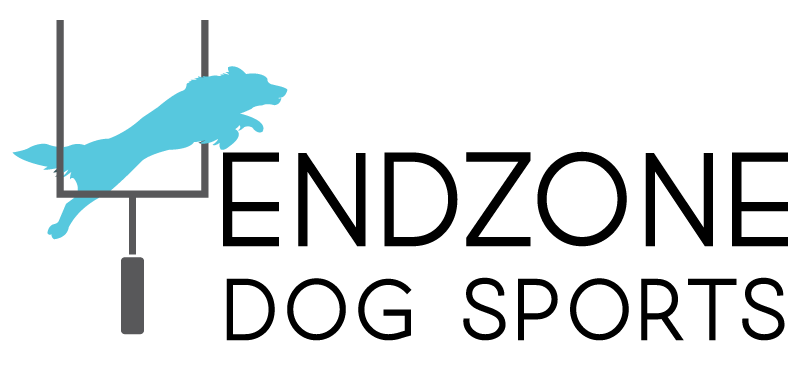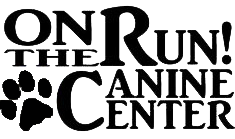
Differ -Photo by Sharla Glick – Glick Photography September 2023
If you’ve been doing agility long enough, you know how fragile the start line is for many dogs. If you’ve never had an issue with your dog’s start line, consider yourself lucky.
What is a start line issue?
Here are some common issues that can happen with your dog at the first obstacle on an agility course:
- Leaving before you are ready- the dog takes the first obstacle before you give the release cue.
- Leaving the area – the dog leaves the area to visit or sniff.
- Won’t leave – Your dog freezes in place and won’t leave the area without a lot of handler pleading.
Each issue can have splits where your dog shows signs of moving into one of the above issues. These behaviors are usually not addressed (sometimes not even noticed) until the full-blown problem occurs.
Your dog leaves before you are ready
Here are some behaviors from your dog that might lead to your dog anticipating the release cue.
- Your dog flinches forward but remains in position.
- Your dog changes position
- Your dog moves forward from the original location.
Your dog leaves the area or freezes and won’t move
Here are some behaviors from your dog that might lead to your dog leaving the area to visit or sniff. These same behaviors apply to a dog that freezes in position, not wanting to leave the area.
- Your dog looks away from you or the course (towards the entrance, other people, or the ground) as you set them up at the start line.
- Your dog is slow to set up at the start line.
- Your dog is not excited and moves slowly to the area (when entering on a leash.
- Your dog briefly sniffs on the ground when you set up.
What causes these issues?
Issues at the start line are usually caused by negative emotions – an abundance of stress, anxiety, confusion, frustration, and a lack of confidence and trust.
Handlers can visualize the start line as a natural transition into sequencing. But most don’t take the time to think about how they will handle and then teach their dogs (in a trial) to:
- Enter the ring,
- Set up or line up before leading out,
- When and how to remove the leash (and collar),
- Leave reinforcements behind,
- Run a course with focus and enthusiasm, and
- Exit the ring
Because most handlers don’t think about or teach these skills to their dogs, they end up overhandling, helping, and controlling them from the start to the exit. And since the procedure is different, uncomfortable, and unpredictable to the dog, confusion and stress are associated with entering the trial ring. That stress response manifests in different ways, depending on the nature of your dog.
You can get freezing behaviors if your dog is naturally cautious and tentative. Then, of course, the handler usually changes into an unrecognizable person for their dog- one that pleads, tries to trick, repeats commands, or speaks in a demanding tone. This strategy doesn’t help because it only increases the stress in the dog.
If your dog likes to move, it might disengage and leave the area to sniff or visit someone in the ring. Most people blame this behavior on the dog being too social or distracted with things on the ground. Of course, now the handler is frustrated and demands more from the dog – attention (watch me), obedience (recall), and verbal corrections. That won’t build motivation to run as a team together, either. Sniffing, visiting, and mindless movement are all responses to stress. If you add more fuel to the “stress fire, ” these issues will worsen.
You will get anticipation behaviors if your dog is a workaholic and intense worker. These dogs might seem more focused, but if the handling and training for competition is different from training, it might feel like the dog is being pushy and naughty.
There are many different responses, depending on the personality and experience of your dog.
How to prevent or solve a start line issue
The common mistake with all of these start line issues is that trainers do not have a plan for training the ring entrance, the start line, and the ring exit procedure. The handler rushes the handling for the start line procedure, and the dog starts to predict a different release cue than was intended by the trainer. The dog realizes that they don’t know what’s being asked of them, and that’s when the stress occurs, and the mistakes start to occur.
Do any of these issues sound like your dog? How can you change this behavior?
- Stop trialing if you have a problem.
- Develop a ring entrance procedure (from the gate to the start line) that is enjoyable for you and your dog.
- Teach your dog to set up or line up into any precise position to prepare for a lead-out. This position should be taught separately from sequencing.
- Teach your dog a release cue from that position. Ensure that this release cue is not rushed. It should be isolated from other movements, patterns, or signals. This training is one of the handler’s most challenging parts and is the cause of most issues.
- Teach your dog how to work away from rewards.
- Support and believe in your dog. Mistakes are due to a lack of training or poor handling choices for that dog.
The above should be trained separately and not chained together until each piece is fluent and the dog is confident. Once it’s trained, you won’t need to incorporate the entire chain into every practice run. Occasionally put it together or add pieces to your training.
And if you are interested in diving much deeper into the handling and the training of start lines, take a look at my class next session at FDSA, Building and Maintaining A Start Line.
https://www.fenzidogsportsacademy.com/index.php/courses/11671
What are you doing to help your dog build or maintain the start line?
Pictured at the top is Differ, who has a fragile start line and if she is stressed or confused, she will leave the ring or sniff.


0 Comments